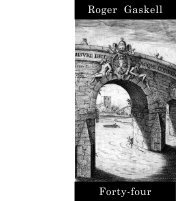pdf - Roger Gaskell Rare Books
pdf - Roger Gaskell Rare Books
pdf - Roger Gaskell Rare Books
You also want an ePaper? Increase the reach of your titles
YUMPU automatically turns print PDFs into web optimized ePapers that Google loves.
Descartes’ correspondence supplements and comments on a wide range of<br />
subjects in his published works concerning philosophy, physiology, mathematics<br />
and natural philosophy. Many of the letters are illustrated. Some<br />
352 letters are included in these volumes (almost half the letters in modern<br />
editions), including many addressed to Hobbes, Fermat, De Roberval, Henry<br />
More, Mersenne, Princess Elizabeth of Bohemia and Queen Christina of<br />
Sweden. The title to volume 3 announces that the letters reply to diYculties<br />
relating to Descartes’ works on dioptrics, geometry and various other scientiWc<br />
subjects.<br />
When Descartes left for Sweden he left a suitcase of papers to be opened<br />
after his death. Few if any of the letters printed here come from that collection.<br />
Descartes took another suitcase of letters with him, some of which he had<br />
already prepared for publication. When he died in his Wrst winter in Sweden<br />
his letters came into the possession of HectorPierre Chanut (1600–1662),<br />
the French ambassador in Sweden. He began to arrange them for publication<br />
with the help of Christiaan Huygens but in the end handed them over to<br />
Claude Clerselier (1614–1684), who had already started to translate and edit<br />
a selection based on draft letters in his possession. Clerselier’s French edition,<br />
Lettres de Monsieur Descartes, (3 volumes, Paris, Charles Angot, 1657–1667) is<br />
the Wrst collective edition of Descartes correspondence.<br />
Although the Latin edition is basically a translation of the Clerselier’s French<br />
edition, the editor, who remains anonymous, had access to other texts and in<br />
some cases the texts printed in the Epistolae are closer to the originals.<br />
The publishing history of the Latin edition is complex. Daniel Elzevier<br />
intended to print all three volumes, as is clear from the preface to the Wrst volume,<br />
but only issued the Wrst two, in 1668, with coeditions issued in London.<br />
After Elzevier’s death, Blaeu took over the publication, reprinted the Wrst two<br />
volumes in 1682 and printed the third volume in 1683 (see Willems, Les Elzevier<br />
1393 and Berghman’s Supplément 369). This set, in contemporary English<br />
bindings is made up of the London issues of the Wrst two volumes, perhaps<br />
purchased on publication, or held by a bookseller, and the Amsterdam edition<br />
of the third volume. There was never a London issue of the third volume.<br />
The London isssues of the Wrst two volumes are diVerent from each other<br />
in that the Wrst is an entirely new setting, bibliographically therefore a new<br />
edition, while the second is a reissue of the Amsterdam edition, with only the<br />
two preliminary leaves reset. In both cases however it is clear that Elzevier<br />
was directly involved. In the Wrst volume the same blocks are used for printing<br />
the illustrations in both the Amsterdam and London editions (in the London<br />
edition they are printed on inserted leaves, rather than integrated with the text).<br />
The type is almost identical but not quite. I have been unable to determine if<br />
the text of the London volume 1 was printed in London and the woodcut plates<br />
in Amsterdam; or all in London; or all in Amsterdam. On the other hand,<br />
the typography of the prelims, the use of the same initial letter P (Berghman,<br />
Etudes sur la bibliographie Elzevirienne no. 325) and a text woodcut used as a<br />
titlepage device, strongly suggest that these leaves were set and printed in<br />
Amsterdam. This is probably also the case in the second volume, the prelims<br />
of which are reset for the London issue, using the same text woodcut on the<br />
titlepage. It seems certain that there was close collaboration between Elzevier<br />
in Amsterdam and Dunmore and Pulleyn in London, but that this relationship<br />
was lost when Blaeu took over the publication.







